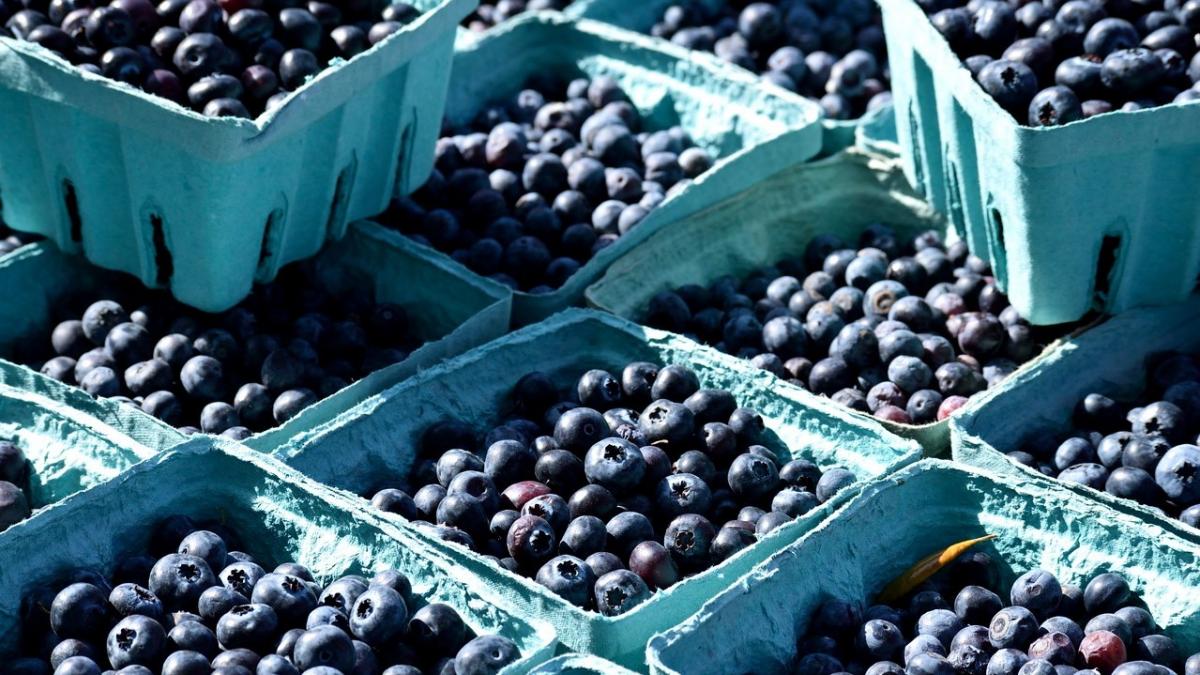You are here
Back to topUSDA Reports on Status of China’s Blueberry Sector

On April 12, the U.S. Department of Agriculture’s Foreign Agricultural Service published its China: Blueberry Annual Voluntary 2023 report describing the status of China’s blueberry industry and recent market trends. In this article, Produce Report has summarized the key results.
According to the report, China replaced the United States as the world’s largest blueberry producer in 2021, while also being a leading blueberry importer. China’s blueberry consumption is expected to witness further growth in the years ahead.
Data from the International Blueberry Organization indicate that the worldwide blueberry planted area reached 235,400 hectares in 2021, with a total output of 1.79 million metric tons. China ranked first with a planted area of 69,036 hectares, followed by the United States, Chile, Peru and Canada. During the same year, China imported 29,597 metric tons of blueberries, primarily from Peru and Chile.
While blueberries are far from a traditional fruit in China, the continued improvement of living standards and growing awareness of the health benefits of eating a variety of fruit have led to an increasing number of consumers considering blueberries as a viable option. Despite blueberries often being processed into dried fruit snacks to be consumed with nuts, fresh blueberries also remain a popular choice among Chinese consumers. Blueberries with a large size, high sugar content, attractive appearance, firm texture and long shelf life are highly sought after on the Chinese market.
Production
At present, 26 of China’s 34 provincial-level administrative regions are engaged in commercial blueberry cultivation, with the fruit mainly being planted in greenhouses or open fields or a combination of the two. Over 56% of China’s domestically grown blueberries are destined for the processing sector.
Guizhou, Liaoning, Shandong, Sichuan and Yunnan are the key blueberry producing regions in China. In 2021, these five provinces accounted for 76.8% of China’s total blueberry production. Yunnan province, with its unique weather and geographical conditions, such as a high altitude, large temperature fluctuation between day and night, and long sunshine hours, is the main production region for fresh blueberries in China.
In the past five years, leading domestic and international blueberry companies, including Driscoll’s from the United States, Costa from Australia and Joy Wing Mau from China, have poured substantial investments into Yunnan, which currently produces the best commercially cultivated blueberries in China. However, blueberry growers in the province are now struggling with a major obstacle: they are finding it difficult to further expand their planting areas, given the strict policies implemented by Chinese authorities over the past decade to protect arable land used to grow other crops.
Trade
In 2012, China granted market access to blueberries from several countries, including Chile, Mexico, Uruguay, Canada and Peru. In 2019, Peru surpassed Chile as China’s largest blueberry supplier. At present, Peru and Chile together account for over 99% of China’s blueberry imports, taking advantage of free trade agreements and counter-seasonal availability. Blueberries from these two countries are not subject to a 15% tariff that all other exporters have to pay.
January and February represent the off-season for China’s domestic blueberries, yet demand for high-quality fruit always surges during Chinese New Year. Therefore, sales of imported blueberries reach a peak in these two months. In order to expand their market share, Peruvian blueberries have been striving each year to arrive in China as early as possible. In the 2022 season, the first batch of Peruvian blueberries hit high-end supermarkets as early as July. This early availability of Peruvian blueberries and the large quantity of China’s domestic blueberries on the market have squeezed the market share of Canadian blueberries, which have been seldom seen in China since 2020.
Fresh U.S. blueberries were approved to enter the Chinese market in May 2020, with the first commercial shipment arriving in July 2021. The blueberries from this shipment reportedly sold out quickly on account of their high quality and large size. In the 2022 season, a new variety of blueberries called Peachy Blue was exported from the United States to China. This new cultivar features a large size and a unique aromatic flavor reminiscent of peaches, which immediately attracted the attention of fruit dealers and consumers alike. Meanwhile, the export volume of processed U.S. blueberries to China has tripled since 2020, which is largely attributable to the higher sugar content and softer skin of U.S. blueberries making them particularly suitable to serve as ingredients in beverages and yogurt.
Market Trends
Blueberry consumption in China is expected to continue growing steadily in the coming years. Owing to the high unit price of blueberries, first-tier cities such as Beijing, Shanghai, Guangzhou and Shenzhen have so far been the main consumption markets, although demand from Northeast China has also been rising rapidly in recent years. Currently, China’s domestic blueberry growers are striving to expand their planting areas and explore novel varieties more suitable for the Chinese market.
In China, blueberries are typically categorized into three grades: 12 to 14 millimeters, 14 to 18 millimeters and 18 millimeters or more. Those produced in Yunnan province have an additional grade of 22 millimeters or more. Large-sized blueberries enjoy strong market demand, especially during the leadup to Chinese New Year. Because of their limited supply, large blueberries always fetch much higher prices. A professor in Southern China has reportedly even successfully developed a new variety of blueberries with a diameter exceeding 26 millimeters.
Image: Pixabay
This article was translated from Chinese. Read the original article.














Add new comment